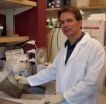(Press-News.org) Scientists have invented methods to scout the human genome's repetitive landscapes, where DNA sequences are highly identical and heavily duplicated. These advances, as reported today in Science, can identify subtle but important differences among people in the number and content of repeated DNA segments.
These copy number variations partly account for the normal diversity among people. Copy number variations might also be why some people, and not others, have certain disorders or disease susceptibilities, and might also determine how severely they are affected.
Until about a year ago, locating and counting the number of duplicated copies of DNA sequences was almost impossible. The more copies of a duplicated gene that are present, the harder they are to assess accurately.
"These difficulties resulted in a lack of understanding of the true extent of human copy number variation, " said Dr. Evan E. Eichler, University of Washington (UW) professor of genome sciences and senior author of the Science paper, "The most dynamic and variable genes are frequently excluded from genome-wide studies." These hard-to-study genes are also among the most interesting because of their suspected contributions to human evolution, brain development, metabolism and disease immunity.
Researchers in Eichler's lab have developed several analytical and computational techniques to overcome obstacles in looking at multicopy genes. The lead authors of the study are Peter H. Sudmant and Jacob O. Kitzman, both graduate students in the UW Department of Genome Sciences.
Working with colleagues in the 1000 Genomes Project and at Agilent Technologies, the UW group used the new techniques to deeply probe and compare the genomes of 159 individuals. In assessing the entire genomes of these individuals, the researchers were able to accurately assay previously intractable duplicated genes and gene families.
The researchers demonstrated that the methods could estimate correctly the absolute number of copies of segments as small as 1,900 DNA base pairs, and could count numbers of copies ranging from 0 to 48. A human genome is made up of about 3 billion DNA base pair. Each pair consists of two bonded molecules called nucleotides, the basic structural unit of DNA.
"We identified 4.1 million singly unique nucleotide positions informative in distinguishing specific copies," the authors reported. The researchers took this information to genotype the number of copies and the content of genes that had been duplicated to or more different positions on the genome thereby became free to function on their own. These duplicated genes reveal changes that occurred during evolution.
The data allowed the researchers to identify duplicated genes specific to humans, in comparison to apes like gorilla, orangutans, and chimps. The researchers observed that these duplications occurred in genes associated with brain development.
These include genes implicated in the growth and branching of brain cell connections, in abnormally large or small head size, in a particular dopamine (reward signal in the brain) receptor, in visual-spatial and social deficits, in reducing the severity of spinal muscular atrophy, and in intellectual disability and epilepsy.
Copy number variations occur in only about 7 percent to 9 percent of human genes, the researchers found. Most of our genes come standard: two copies. Even among copy number variable genes, the researchers learned that 80 percent of them vary between 0 and 5 copies.
"Extreme gene variation," the researchers noted, "is limited to only a few gene families." In this study, they identified 56 of the most variable gene families. These ranged in median copy number from 5 to approximately 368.
"These genes were dramatically enriched for segmental duplication," the researchers noted. Segmental duplications are regions that were originally identified in the Human Genome Project as long, repeated blocks of the genome.
The researchers report discovering about 44 "hidden" members of duplicated gene families never before identified in the reference model of the human genome.
"The missing members of these gene families," the researchers suggested, "should be targeted for sequence finishing in order to more accurately capture the architecture and diversity of the human genome."
While duplications of segments of the genome appear to have led to many of the qualities that distinguish human beings from other primate species, areas of the genome in which duplications promote recurrent rearrangements have also been associated with debilitating diseases like intellectual disability, schizophrenia and autism.
The researchers hypothesize, "Extreme variation resulting from duplications may contribute to genomic instability associated with disease."
Overall, the results of the study shows scientists can now leverage newly developed techniques to explore some of the most complex genetic regions of the human genome. Still, a portion of the genome remains impenetrable. About 28 large regions of the human genome have such extraordinary complexity that as yet it is impossible to interpret the underlying pattern of genetic diversity, the authors said.
Despite this limitation, the approaches tested in the study hold promise for improving the understanding of how copy number variation contributes to human health and illness.
"Our approach," the researchers concluded," makes many of the highly duplicated regions of the human genome – and the more than 1,000 previously inaccessible human genes that lie therein –accessible to genetic studies of disease association."
INFORMATION:
In addition to Eichler, Sudmant, and Kitzman, the scientists on the study are Francesca Antonacci, Can Alkan and Maika Malig, all from the UW Department of Genome Sciences; Anya Tsalenko, Nick Sampas, and Laurakay Bruhn, all of Agilent Technologies in Santa Clare, Calif., Jay Shendure, UW assistant professor of genome sciences, and participants and institutions in the 1000 Genome Project.
The work was supported by a Natural Sciences and Engineering Research Council of Canada Fellowship, a National Science Foundation Fellowship, and a grant from the National Human Genome Research Institute, National Institutes of Health. Eichler is an investigator of the Howard Hughes Medical Institute.
New methods detect subtleties in human genomes' repetitive landscapes
These techniques spot minute variations linked to evolution, diversity and brain development
2010-10-28
ELSE PRESS RELEASES FROM THIS DATE:
Certain cancer therapies' success depends on presence of immune cell, Stanford study shows in mice
2010-10-28
STANFORD, Calif. — The immune system may play a critical role in ensuring the success of certain types of cancer therapies, according to a new study by researchers at the Stanford University School of Medicine. The research showed treatments that disable cancer-promoting genes called oncogenes are much more successful in eradicating tumors in the presence of a signaling molecule secreted by kind of immune cell called a T helper cell.
The finding is important because many drugs now in use in humans are often tested in lab animals with weakened immune systems and many human ...
Controlling individual cortical nerve cells by human thought
2010-10-28
PASADENA, Calif.—Five years ago, neuroscientist Christof Koch of the California Institute of Technology (Caltech), neurosurgeon Itzhak Fried of UCLA, and their colleagues discovered that a single neuron in the human brain can function much like a sophisticated computer and recognize people, landmarks, and objects, suggesting that a consistent and explicit code may help transform complex visual representations into long-term and more abstract memories.
Now Koch and Fried, along with former Caltech graduate student and current postdoctoral fellow Moran Cerf, have found ...
Revising the timeline for deadly pancreatic cancer
2010-10-28
Pancreatic tumors are one of the most lethal cancers, with fewer than five percent of patients surviving five years after diagnosis. But a new study that peers deeply into the genetics of pancreatic cancer presents a bit of good news: an opportunity for early diagnosis. In contrast to earlier predictions, many pancreatic tumors are, in fact, slow growing, taking nearly 20 years to become lethal after the first genetic perturbations appear.
"There have been two competing theories explaining why pancreatic cancers are so lethal," says Bert Vogelstein, the Howard Hughes ...
1000 Genomes Project publishes analysis of completed pilot phase
2010-10-28
Small genetic differences between individuals help explain why some people have a higher risk than others for developing illnesses such as diabetes or cancer. Today in the journal Nature, the 1000 Genomes Project, an international public-private consortium, published the most comprehensive map of these genetic differences, called variations, estimated to contain approximately 95 percent of the genetic variation of any person on Earth.
Researchers produced the map using next-generation DNA sequencing technologies to systematically characterize human genetic variation ...
Large-scale fish farm production offsets environmental gains
2010-10-28
VICTORIA – Industrial-scale aquaculture production magnifies environmental degradation, according to the first global assessment of the effects of marine finfish aquaculture (e.g. salmon, cod, turbot and grouper) released today. This is true even when farming operations implement the best current marine fish farming practices.
Dr. John Volpe and his team at the University of Victoria developed the Global Aquaculture Performance Index (GAPI), an unprecedented system for objectively measuring the environmental performance of fish farming.
"Scale is critical," said Dr. ...
Spiral galaxies stripped bare
2010-10-28
HAWK-I [1] is one of the newest and most powerful cameras on ESO's Very Large Telescope (VLT). It is sensitive to infrared light, which means that much of the obscuring dust in the galaxies' spiral arms becomes transparent to its detectors. Compared to the earlier, and still much-used, VLT infrared camera ISAAC, HAWK-I has sixteen times as many pixels to cover a much larger area of sky in one shot and, by using newer technology than ISAAC, it has a greater sensitivity to faint infrared radiation [2]. Because HAWK-I can study galaxies stripped bare of the confusing effects ...
Singapore scientist leads team to discover origin of brain immune cells
2010-10-28
A team of international scientists led by Dr Florent Ginhoux of the Singapore Immunology Network (SIgN) of Singapore's Agency of Science, Technology and Research (A*STAR), have made a breakthrough that could lead to a better understanding of many neurodegenerative and inflammatory brain disorders. Their work, published in top scientific journal Science, uncovered the origins of microglia, which are white blood cells specific to the brain, and showed that, in mice, microglia had a completely different origin than other white blood cells. This understanding may lead to the ...
Narcotics and diagnostics overused in treatment of chronic neck pain
2010-10-28
Duke University and University of North Carolina (UNC) researchers report in the November issue of Arthritis Care & Research that narcotics and diagnostic testing are overused in treating chronic neck pain. Their findings indicate clinicians may overlook more effective treatments for neck pain, such as therapeutic exercise. According to reviews cited in the study, evidence to support the effectiveness of therapeutic exercise in treating chronic neck pain is good, yet only 53% of subjects were prescribed such exercise. This information was based upon reported data from a ...
Learning the truth not effective in battling rumors about NYC mosque, study finds
2010-10-28
COLUMBUS, Ohio – Evidence is no match against the belief in false rumors concerning the proposed Islamic cultural center and mosque near Ground Zero in New York City, a new study finds.
Researchers at Ohio State University found that fewer than one-third of people who had previously heard and believed one of the many rumors about the proposed center changed their minds after reading overwhelming evidence rejecting the rumor.
The false rumor that researchers used in the study was that Feisal Abdul Rauf, the Imam backing the proposed Islamic cultural center and mosque, ...
Victims of child abuse present higher rates of post-traumatic stress disorder
2010-10-28
In cases of child sexual abuse, there are children and teenagers that blame themselves (for example, after the thought that the abuse was led by them) or their family (thinking that their family should have protected them) for the abuse suffered in their childhood. This type of victims resort more frequently to avoidance coping. Thus, they try to sleep more than usual, avoid thinking on the problem, or resort to alcohol and drug abuse –in the case of teenagers. This behaviour leaves important psychological after-effects on victims: concretely, they present more symptoms ...
LAST 30 PRESS RELEASES:
iPS cells from dish to freezer and back
Deep neural networks enable accurate pricing of American options under stochastic volatility
Collective risk resonance in Chinese stock sectors uncovered through higher-order network analysis
Does CPU impact systemic risk contributions of Chinese sectors? Evidence from mixed frequency methods with asymmetric tail long memory
General intelligence framework to predict virus adaptation based on a genome language model
Antibiotic resistance is ancient, ecological, and deeply connected to human activity, new review shows
Vapes, pouches, heated tobacco, shisha, cigarettes: nicotine in all forms is toxic to the heart and blood vessels
From powder to planet: University of Modena engineers forge a low-carbon future for advanced metal manufacturing
Super strain-resistant superconductors
Pre-school health programme does not improve children’s diet or physical activity, prompting call for policy changes, study finds
Autumn clock change linked to reduction in certain health conditions
AI images of doctors can exaggerate and reinforce existing stereotypes
Where medicine meets melody – how lullabies help babies and parents in intensive care
We may never be able to tell if AI becomes conscious, argues philosopher
AI video translation shows promise but humans still hold the edge
Deep ocean earthquakes drive Southern Ocean’s massive phytoplankton blooms, study finds
Without campus leftovers to pick through, the beaks of this bird changed shape during the pandemic
High-dose antibiotic does not reduce mortality in tuberculous meningitis
How many insects fly in the sky above the USA?
Could cheese protect your brain health?
Who faces more difficulty recovering from stroke?
Colliding galaxies create the brightest, fastest growing black holes at their center
New BrainHealth research reveals tradeoffs on sleep with cannabis use for chronic pain
Aging-US now on ResearchGate, enhancing visibility for authors and readers
'Molecular glue' stabilizes protein that inhibits development of non-small cell lung cancer
Mount Sinai Health System is recognized in 2025 Chime Digital Health Most Wired survey
From prey to predator: How carnivores spread beneficial fungi
Menopause symptoms may be frequent and have negative effects, according to female endurance athletes
US Congressmembers’ responses on X to mass shooting events differ along party lines
KAIST-UEL team develops “origami” airless wheel to explore lunar caves
[Press-News.org] New methods detect subtleties in human genomes' repetitive landscapesThese techniques spot minute variations linked to evolution, diversity and brain development


